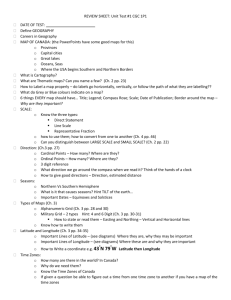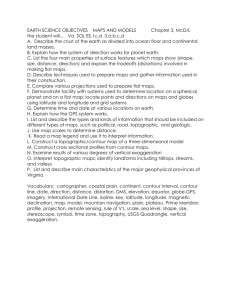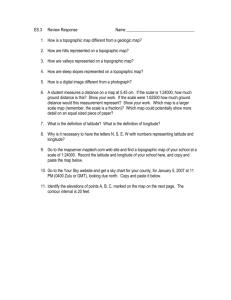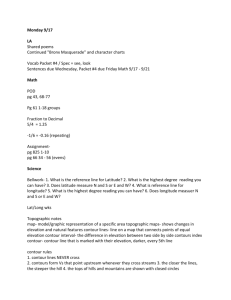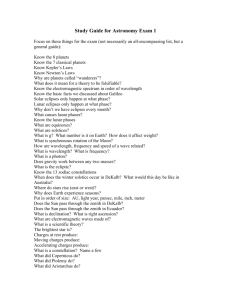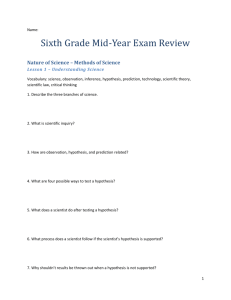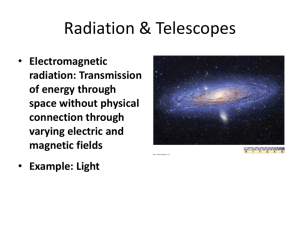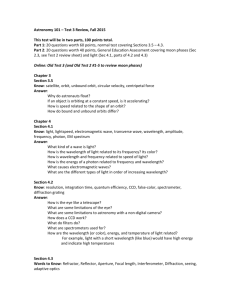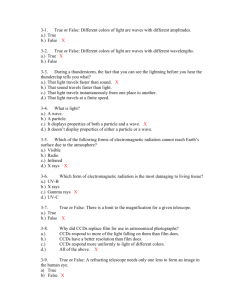Unit 3 Guide Foundations
advertisement
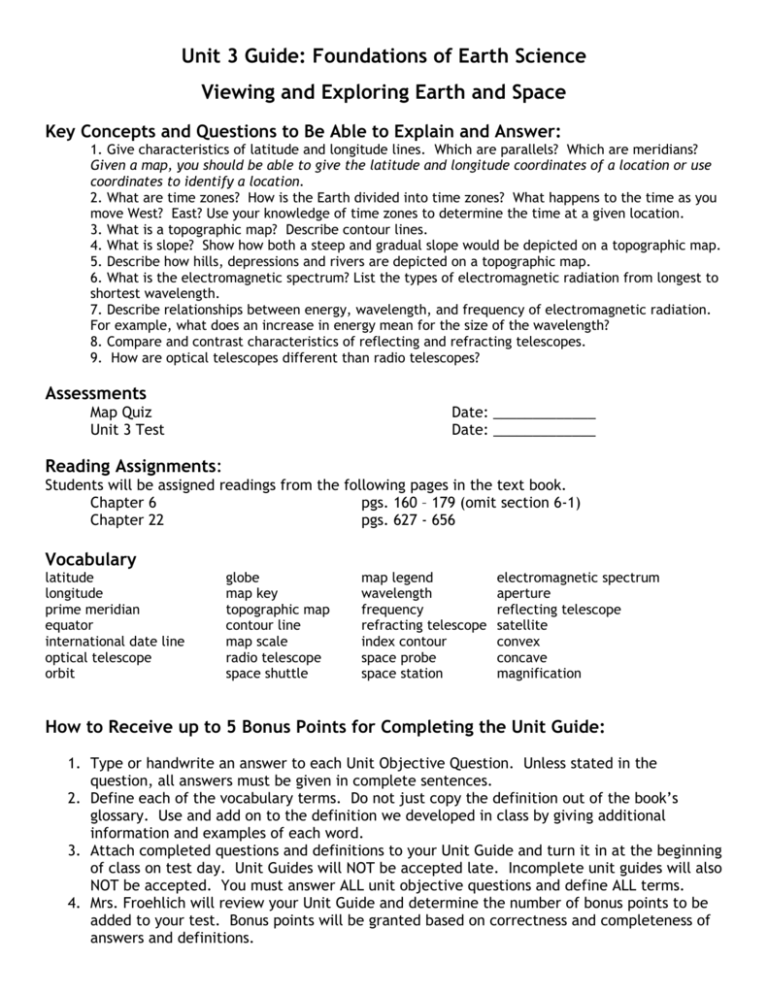
Unit 3 Guide: Foundations of Earth Science Viewing and Exploring Earth and Space Key Concepts and Questions to Be Able to Explain and Answer: 1. Give characteristics of latitude and longitude lines. Which are parallels? Which are meridians? Given a map, you should be able to give the latitude and longitude coordinates of a location or use coordinates to identify a location. 2. What are time zones? How is the Earth divided into time zones? What happens to the time as you move West? East? Use your knowledge of time zones to determine the time at a given location. 3. What is a topographic map? Describe contour lines. 4. What is slope? Show how both a steep and gradual slope would be depicted on a topographic map. 5. Describe how hills, depressions and rivers are depicted on a topographic map. 6. What is the electromagnetic spectrum? List the types of electromagnetic radiation from longest to shortest wavelength. 7. Describe relationships between energy, wavelength, and frequency of electromagnetic radiation. For example, what does an increase in energy mean for the size of the wavelength? 8. Compare and contrast characteristics of reflecting and refracting telescopes. 9. How are optical telescopes different than radio telescopes? Assessments Map Quiz Unit 3 Test Date: _____________ Date: _____________ Reading Assignments: Students will be assigned readings from the following pages in the text book. Chapter 6 pgs. 160 – 179 (omit section 6-1) Chapter 22 pgs. 627 - 656 Vocabulary latitude longitude prime meridian equator international date line optical telescope orbit globe map key topographic map contour line map scale radio telescope space shuttle map legend wavelength frequency refracting telescope index contour space probe space station electromagnetic spectrum aperture reflecting telescope satellite convex concave magnification How to Receive up to 5 Bonus Points for Completing the Unit Guide: 1. Type or handwrite an answer to each Unit Objective Question. Unless stated in the question, all answers must be given in complete sentences. 2. Define each of the vocabulary terms. Do not just copy the definition out of the book’s glossary. Use and add on to the definition we developed in class by giving additional information and examples of each word. 3. Attach completed questions and definitions to your Unit Guide and turn it in at the beginning of class on test day. Unit Guides will NOT be accepted late. Incomplete unit guides will also NOT be accepted. You must answer ALL unit objective questions and define ALL terms. 4. Mrs. Froehlich will review your Unit Guide and determine the number of bonus points to be added to your test. Bonus points will be granted based on correctness and completeness of answers and definitions.

